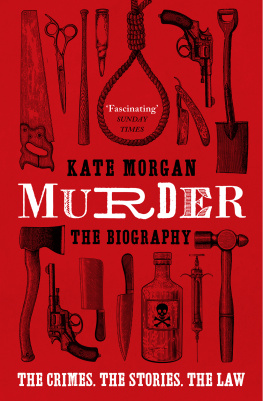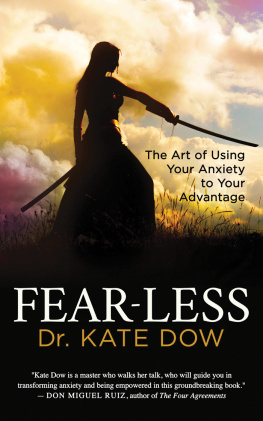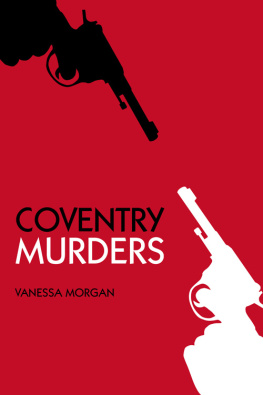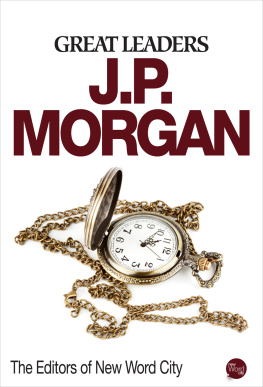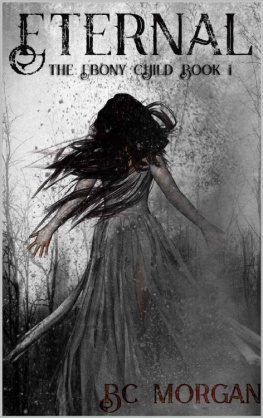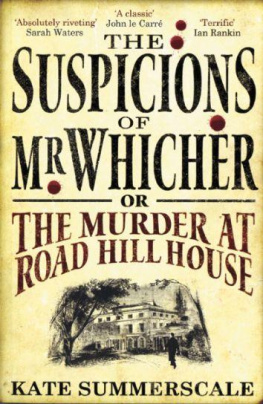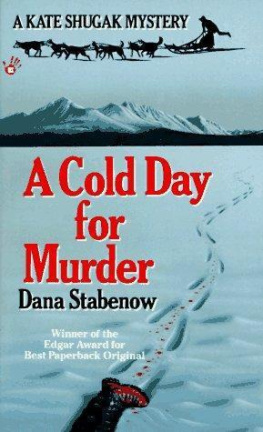Kate Morgan - Murder: The Biography
Here you can read online Kate Morgan - Murder: The Biography full text of the book (entire story) in english for free. Download pdf and epub, get meaning, cover and reviews about this ebook. year: 2021, publisher: HarperCollins Publishers, genre: Detective and thriller. Description of the work, (preface) as well as reviews are available. Best literature library LitArk.com created for fans of good reading and offers a wide selection of genres:
Romance novel
Science fiction
Adventure
Detective
Science
History
Home and family
Prose
Art
Politics
Computer
Non-fiction
Religion
Business
Children
Humor
Choose a favorite category and find really read worthwhile books. Enjoy immersion in the world of imagination, feel the emotions of the characters or learn something new for yourself, make an fascinating discovery.
- Book:Murder: The Biography
- Author:
- Publisher:HarperCollins Publishers
- Genre:
- Year:2021
- Rating:4 / 5
- Favourites:Add to favourites
- Your mark:
- 80
- 1
- 2
- 3
- 4
- 5
Murder: The Biography: summary, description and annotation
We offer to read an annotation, description, summary or preface (depends on what the author of the book "Murder: The Biography" wrote himself). If you haven't found the necessary information about the book — write in the comments, we will try to find it.
Murder: The Biography — read online for free the complete book (whole text) full work
Below is the text of the book, divided by pages. System saving the place of the last page read, allows you to conveniently read the book "Murder: The Biography" online for free, without having to search again every time where you left off. Put a bookmark, and you can go to the page where you finished reading at any time.
Font size:
Interval:
Bookmark:

Mudlark
An imprint of HarperCollinsPublishers
1 London Bridge Street
London SE1 9GF
www.harpercollins.co.uk
HarperCollinsPublishers
1st Floor, Watermarque Building, Ringsend Road
Dublin 4, Ireland
First published by Mudlark 2021
FIRST EDITION
Kate Morgan 2021
Cover design by Holly Macdonald HarperCollinsPublishers Ltd 2021
Cover illustrations Shutterstock.com
A catalogue record of this book is available from the British Library
Kate Morgan asserts the moral right to be identified as the author of this work
All rights reserved under International and Pan-American Copyright Conventions. By payment of the required fees, you have been granted the nonexclusive, non-transferable right to access and read the text of this e-book on screen. No part of this text may be reproduced, transmitted, downloaded, decompiled, reverse engineered, or stored in or introduced into any information storage retrieval system, in any form or by any means, whether electronic or mechanical, now known or hereinafter invented, without the express written permission of HarperCollins e-books.
Find out about HarperCollins and the environment at
www.harpercollins.co.uk/green
Source ISBN: 9780008407339
Ebook Edition April 2021 ISBN: 9780008407353
Version: 2022-03-21
This ebook contains the following accessibility features which, if supported by your device, can be accessed via your ereader/accessibility settings:
- Change of font size and line height
- Change of background and font colours
- Change of font
- Change justification
- Text to speech
- Page numbers taken from the following print edition: ISBN 9780008407339
INTRODUCTION

Scarlet billows start to spread
The recording begins with the crackle of a gramophone, before the barrel organ starts to grind out an eerie fairground melody. The reedy voice begins to sing in German, the tongue rolling over the letter r with a sinister relish. Even for those who dont speak the language, the nursery-rhyme rhythm of the song sounds vaguely but disconcertingly familiar:
Und der Haifisch, der hat Zhne, Und die trgt er im Gesicht
(And the shark, he has teeth, and he bears the scars of them in his face )
The singer is Bertolt Brecht and the song is Der Moritat von Mackie Messer, the opening number from The Threepenny Opera, the 1928 musical written by Brecht and composer Kurt Weil. The Opera tells the story of the gangs of beggars and thieves that inhabit the underworld of Victorian London. Chief among these is the villainous Macheath, notorious for his murderous deeds around the streets and alleyways of the city, which are listed in the song for the audiences benefit. In the 1950s a production of the show opened off Broadway, and in 1955 Louis Armstrong recorded a tightened translation of the song set to a jaunty jazz tune Mackie Messer had been transformed and given a new American identity as Mack the Knife.
Bobby Darin released another cover version of the song a couple of years later and the tune has become a lounge singer standard, covered by Frank Sinatra, Ella Fitzgerald and countless others. But its creepy origins as a 20th-century take on the traditional moritat, or murder ballad, are often overlooked. These pieces, popular for centuries throughout Germany and the rest of Europe, set stories of murder, vengeance and justice to simple tunes. Tom Joness Delilah is another modern song that owes a similar debt to the tradition, a brutal crime of passion told from the murderers point of view, with an instantly recognisable tune and a memorable chorus.
Mackie, and later Mack, is the embodiment of the murderer as a kind of folk hero, reviled and revered in almost equal measure. The celebration of his exploits goes to the heart of our grisly fascination with murder; we are simultaneously intrigued and revolted. His deeds are listed with relish and the song congratulates him on his ability to evade detection. The Armstrong and Darin versions cleaned up Macks antics considerably the original German verses are much darker, accusing him of raping and killing several women but there is still a thinly disguised admiration, even affection, for him underlying all of the modern versions of the song. Darins swinging portrait of Mack, whom he had recast as a suave gangster, earned him a Grammy for the 1959 Record of the Year. But the minstrels who wrote and sang the original ballads would still recognise the tale of death and bloody vengeance in Mack the Knife.
Throughout our history, violent death at the hands of another has been part of the songs that we sing, the names that we give things and the stories that we tell each other. In Scottish folklore, the sluagh is a swarm of malevolent spirits said to haunt the night sky. No longer earthbound, they fly across the Hebrides seeking out the living, particularly those who have sinned, snatching them up and dropping them back down to earth from a fatal height. In their rarely glimpsed physical form, they appear as a flock of black birds, usually crows. The coal-black bird has had a long career in folk tales as an omen or even a harbinger of death; it scavenged on the bodies of the dead, irresistibly drawing it to sites of death such as battlefields and graveyards. Nowhere is this grim association more apparent than in the collective noun for a flock of crows a murder.
The appetite for stories of terrible deeds and the people who commit them is an enduring part of human nature. It can be traced from the medieval moritats, through Victorian penny dreadfuls, right up to the true crime documentaries and podcasts that we consume so voraciously today. The medium may have changed from ballad sheets to Netflix, but beneath the surface the stories are the same. Whether in fact or fiction, murder can be all things to all people. At a basic level, it is a tale of good versus evil, where the roles of victim and villain are clearly laid out before us. More often than not, there is an element of mystery at its heart, a riddle to be solved. The glut of detective novels in the first half of the 20th century epitomised this appeal, with the victim and their death often simply a vehicle to get into the intellectually satisfying fun of collecting and analysing the clues to unmask the killer. Then there is of course the voyeuristic and vicarious chill we get from reading about horrible things happening to other people, whether real or imagined.
In the midst of life, we are in death and thats exactly how we like it. In his 1946 essay Decline of the English Murder, George Orwell was adamant that murder had peaked in a golden age between 1850 and 1925, but over seventy-five years later it seems that his report of murders terminal decline was greatly exaggerated. Whether in fiction or on the news, murder exerts a fascination unlike any other crime, and our appetite for the homicidal is robustly insatiable. We invite it into our homes every night on the television and we go to sleep with it on the bedside table between the covers of a paperback. There is now no small-town homicide or suburban slaying too obscure to be picked over in minute detail in a podcast or documentary. In drama, tales of murder recur as plot devices in everything from Shakespeare to soap operas. As a genre, crime fiction has been a literary behemoth ever since the Victorians popularised the detective story. Our fictional encounters still usually climax with the apprehension of the culprit and the tacit conclusion that justice will be done, but in real life the solving of the crime is only half the story. There are many hurdles to leap before the captured killer becomes the convicted murderer.
Font size:
Interval:
Bookmark:
Similar books «Murder: The Biography»
Look at similar books to Murder: The Biography. We have selected literature similar in name and meaning in the hope of providing readers with more options to find new, interesting, not yet read works.
Discussion, reviews of the book Murder: The Biography and just readers' own opinions. Leave your comments, write what you think about the work, its meaning or the main characters. Specify what exactly you liked and what you didn't like, and why you think so.

